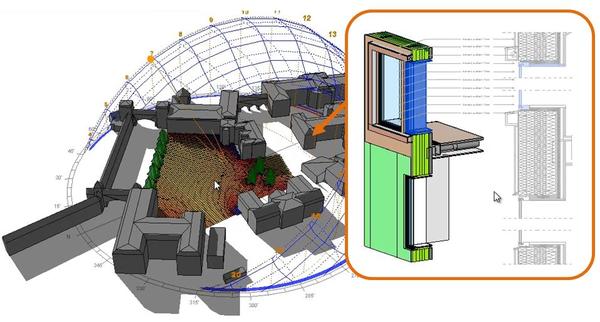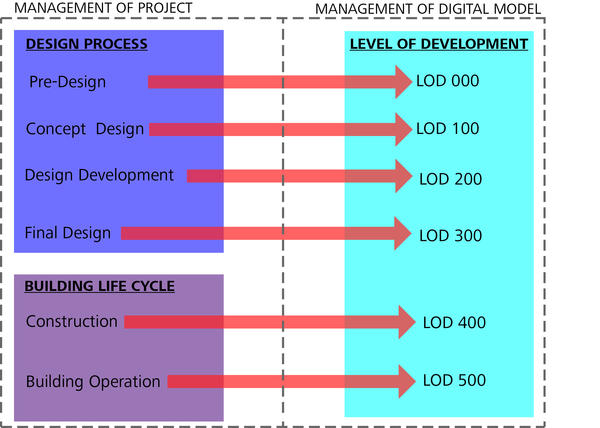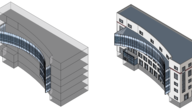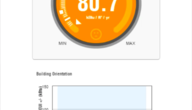You are here
The building process has been refined over thousands of years. While every project’s process is slightly different, projects generally progress along these major phases. It’s important to know the right type and level of information that’s needed within each phase to add the most value.
Project Phases
In the construction industry, the design process is described by the phases of pre-design, conceptual design, design development, and final design. The building life cycle process is described by the phases of construction and building operation.
 |
|
Typical Design Process of Buildings |
Level of Detail (LOD)
In order to efficiently manage the process of working in a BIM workflow, the industry has adopted a formal language of describing the completeness of a digital model at a given point in time. This language is “Level of Development” (LOD). LOD, in the BIM world, ranges from 100 (basic/conceptual) to 500 (highly detailed/precise). It is not unusual for levels of expected development to be part of the contract documents as described by the American Institute of Architect’s Building Information Modeling Protocol.
LOD phases can be summarized as follows.
- LOD 100: Modeled elements are at a conceptual point of development. Information can be conveyed with massing forms, written narratives, and 2D symbols.
- LOD 200: Modeled elements have approximate relationships to quantities, size, location, and orientation. Some information may still be conveyed with written narratives.
- LOD 300: Modeled elements are explained in terms of specific systems, quantities, size, shape, location, and orientation.
- LOD 400: Continuation of LOD 300 with enough information added to facilitate fabrication, assembly, and installation.
- LOD 500: Modeled elements are representative of as installed conditions and can be utilized for ongoing facilities management.
LOD and Building Performance Analysis
Secondly, digital methods of BPA are dependent upon the amount of information that is digitally modeled. Therefore it becomes beneficial to comprehend what LOD a model is at, and what that means in terms of available data, so analysis methods can be associated with the digital information that is readily available. For example, a model at LOD 100 will not allow one to conduct energy modeling that is required for LEED certification, but energy modeling with a LOD 100 can identify how the building’s energy consumption can be influenced by solar radiation. For these reasons, the LOD of a model and BPA practices share a feedback loop that at times are not as linear as the steps to developing levels of detail in the BIM model. This may be best explained with the following graphic.
Drawing the BPA connection
If we understand BPA as a tool for answering design questions, while simultaneously relying on modeled information, we can then establish relationships to how certain BPA practices may be related to LOD and the time scale of how a design project evolves. The following are some examples of how these relationships work during the design process.
Pre-Design
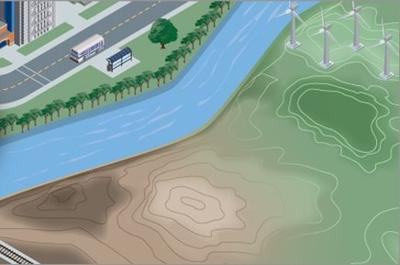
Phase Objectives:
Identify the requirements of the project, existing conditions, and unearth any essential information that will inform the design process. Common activities include preparing a building program, conducting a site analysis, and inventorying local code requirements.
Sustainable Design Inquires:
- What information will support BPA practices?
- What specific climate considerations should be brought to light?
- What is passive sustainable design strategies should be considered in the building design?
- What environmental resources can the building design utilize?
- What are the energy/performance goals for the project?
LOD Assumptions:
If a new project, there is no digital model available. If an existing building, a digital project model might be available at a LOD 300.
BPA Actions:
- Decide what climate data is most appropriate for the geographic location.
- Conduct a site analysis that minimally includes investigation of solar radiation , wind patterns , presence and condition of existing structures, inventorying existing vegetation, and documenting any acoustic challenges that exist.
- Analyze climate charts and determine if building is likely to be heating or cooling dominated.
- Research what sustainable design strategies would be applicable to both the geographic location, and climate zone of the project. Tools such as the 2030 Palette and Climate Consultant can help with this.
- Establish measurement matrices that are to be used throughout the duration of the project to confirm sustainable design goals are being accounted for. These can be formularized rating systems such as LEED and Breeam.
Conceptual Design
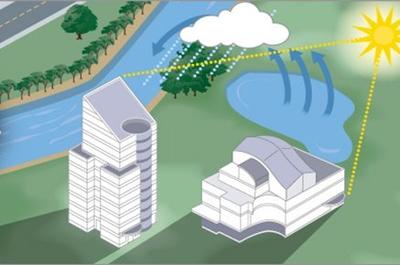
Phase Objectives:
Decide on the direction of the design by experimenting, iterating, and obtaining integrated design input from all parties. The principle objective during this phase is to make high-level decisions that will provide direction to the entire design process.
Sustainable Design Inquires:
- What is the most efficient building form?
- How is the building positioned on the building site?
- How is the floor plan organized?
- How do passive sustainable design strategies integrate with the building?
LOD Assumptions:
Most of the architectural model is at LOD 100. The building form is digitally modeled in massing geometries, and the spatial relationships of the building program are sketched out with bubble diagrams.
BPA Actions:
- Run conceptual energy analysis using and modifying massing forms and determine how the Energy Use Intensity (EUI) can be reduced by changes in building form, and orientation. Doing so can help determine the most energy efficient building form.
- Conduct basic shade/shadow analysis of the massing model to determine what areas of the building could potentially support daylighting, and consequently inform interior space planning. This also informs the positioning of the building on the site.
- Do solar radiation studies of the mass model to maximize opportunities for solar collection.
- Study how the orientation of the massing model interacts with wind on the site. Orientation of the building can optimize opportunities for passive cooling and ventilation.
Design Development
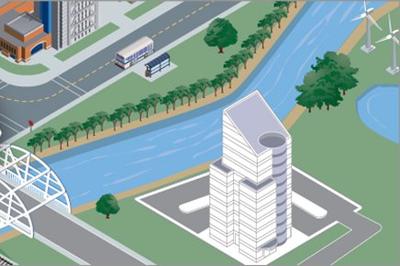
Phase Objectives:
Verify and edit performative attributes of proposed design, while refining material, mechanical, and structural systems with specificity. This phase involves a lot of detailed experimentation and rigorous decision making.
Sustainable Design Inquires:
- How should the floor plan be modified to improve the quality of day lighting?
- How can HVAC equipment be designed most efficiently?
- How can structural system be designed most efficiently?
- Do passive sustainable design strategies provide the expected performance?
- What materials are being used to construct the building?
LOD Assumptions:
Architecture model is at LOD 200/LOD 300 with generic cladding materials identified, and floor plan is modeled with appropriate wall thicknesses and materials. Structural model is at least at LOD 200 with generic framing systems.
BPA Actions:
- Run whole building energy analysis of building model, and identify how changes in wall construction can reduce energy demands. This also presents a good opportunity to test the performance of HVAC systems that were initially selected in Concept Design.
- Complete simulations that determine the general geometry of performative features to determine if shades, light shelves, and solar chimneys are working as predicted. If not, revise model geometry to do so.
- Run interior daylighting analysis of spaces, and confirm proper light levels are being achieved.
- After maximizing the efficiency of the building envelope, run cooling/heating load simulation so that HVAC equipment can be sized for efficiency.
- Perform structural analysis of model so that structural systems can be optimized. When structural members are not optimized for efficiency, the building consumes more construction materials than is needed.
Final Design and Documentation

Phase Objectives:
Provide detailed direction, and specification, to construct the most comprehensive iteration of the building. Assure that the constructed manifestation of the design will be as sustainable as feasibly possible.
Sustainable Design Inquires:
- Are sustainable design goals achieved?
- Are building owner’s expectations of costs and performance achieved?
- What is the expected performance of the building?
LOD Assumptions:
All models completed to LOD 300, with sizes and material selections finalized for all primary building elements.
BPA Actions:
- Perform detailed whole building energy analysis of the final design to document expected performance, and measure against baselines. And compare final design against the measurement matrices that were defined in Pre-Design.
- Perform greenhouse gas emissions analysis to document expected environmental impact.
- Audit final building materials for costs and green qualities (recycled content, close proximity to construction site, low VOCs).
Construction
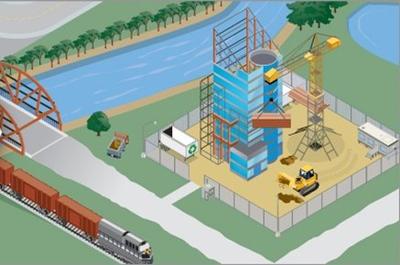
Phase Objectives:
Bring the building design into physical reality, by practicing sustainable construction methods and utilizing quality control methods.
Sustainable Design Inquires:
- How can waste be reduced in the construction process?
- How can fabrication methods reduce waste?
- How can construction be done in a sustainable manner?
LOD Assumptions:
Architecture, MEP, and Structural models are at LOD300 and are being evolved to LOD400 with enhanced information that supports fabrication and construction coordination.
BPA Actions:
- Analyze building quantities to assure that exact material quantities are delivered to the project site. Doing so will avoid excess material that gets turned into waste.
- Analyze best fabrication methods with digital automation. This step reduces waste material in the production of building assemblies.
- Run construction scheduling simulations that identify how to reduce equipment operations on the project site. Less use of construction equipment reduces both energy consumption and air pollution.
Operations and Maintenance
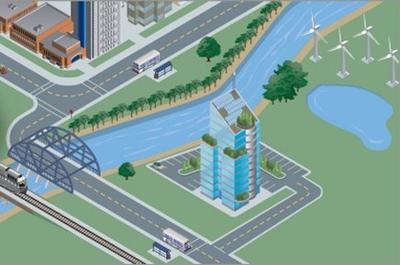
Phase Objectives:
The building becomes occupied and has all equipment operating.
Sustainable Design Inquires:
- Are environmental control systems operating correctly?
- Is building able to maintain sustainable design goals when occupied?
- Is maintenance being done that assures environmental control systems can continue to perform at their optimum?
LOD Assumptions:
All models are at LOD500, represent physical conditions, and are being updated in parallel with facility management operations.
BPA Actions:
- Perform initial and ongoing commissioning of environmental systems to assure they are working as anticipated. Poorly performing environmental systems can result in compromised occupant comfort, and unnecessary energy consumption.
- Add ongoing utility cost/demand data to energy model, and compare/identify differences between designed and actual performance.
- Administer occupancy survey to verify occupant satisfaction, and make recommendations to facilities management for improving occupant satisfaction.
| Attachment | Size |
|---|---|
| 1.52 MB |
Links and References
- A report from the AIA.
- Sample of how LOD relates to project phases

